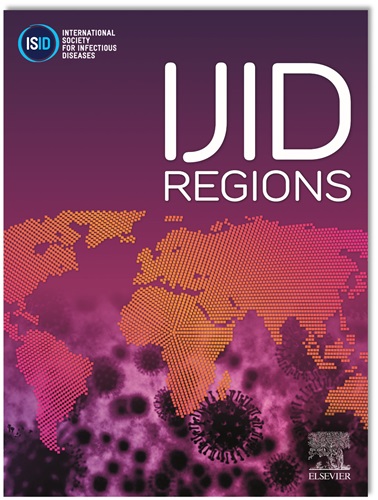Identification of host endotypes using peripheral blood transcriptomics in a prospective cohort of patients with endocarditis
IF 4.8
2区 医学
Q1 INFECTIOUS DISEASES
引用次数: 0
Abstract
Objectives
Host responses to infection are a major determinant of outcome. However, the existence of different response profiles in patients with endocarditis has not been addressed. Our objective was to apply transcriptomics to identify endotypes in patients with infective endocarditis.
Methods
A total of 32 patients with infective endocarditis were studied. Clinical data and blood samples were collected at diagnosis and RNA sequenced. Gene expression was used to identify two clusters (endocarditis endotype 1 [EE1] and endocarditis endotype 2 [EE2]). RNA sequencing was repeated after surgery. Transcriptionally active cell populations were identified by deconvolution. Differences between endotypes in clinical data, survival, gene expression, and molecular pathways involved were assessed. The identified endotypes were recapitulated in a cohort of COVID-19 patients.
Results
A total of 18 and 14 patients were assigned to EE1 and EE2, respectively, with no differences in clinical data. Patients assigned to EE2 showed an enrichment in genes related to T-cell maturation and a decrease in the activation of the signal transducer and activator of transcription protein family pathway, with higher counts of active T cells and lower counts of neutrophils. A total of 14 patients (nine in EE1 and five in EE2) were submitted to surgery. Surgery in EE2 patients shifted gene expression toward a EE1-like profile. In-hospital mortality was higher in EE1 (56% vs 14%, P = 0.027), with an adjusted hazard ratio of 12.987 (95% confidence interval 3.356-50). Translation of these endotypes to COVID-19 and non–COVID-19 septic patients yielded similar results in cell populations and outcome.
Conclusions
Gene expression reveals two endotypes in patients with acute endocarditis, with different underlying pathogenetic mechanisms, responses to surgery, and outcomes.
在前瞻性心内膜炎患者队列中利用外周血转录组学鉴定宿主内型。
背景:宿主对感染的反应是预后的主要决定因素。然而,心内膜炎患者是否存在不同的反应特征尚未得到研究。我们的目的是应用转录组学确定感染性心内膜炎患者的内型:研究对象为 32 名感染性心内膜炎患者。方法:我们对 32 名感染性心内膜炎患者进行了研究,在确诊时收集了临床数据和血液样本,并对 RNA 进行了测序。通过基因表达确定两个群组(心内膜炎内型 EE1 和 EE2)。手术后再次进行 RNA 测序。通过去卷积法确定了转录活跃的细胞群。评估了不同内型在临床数据、存活率、基因表达和分子通路方面的差异。在 COVID19 患者队列中再现了已确定的内型:结果:分别有 18 名和 14 名患者被归入 EE1 和 EE2,临床数据无差异。被分配到 EE2 的患者T细胞成熟相关基因丰富,STAT 通路激活减少,活性 T 细胞数量增加,中性粒细胞数量减少。14名患者(9名在EE1中,5名在EE2中)接受了手术。EE2 患者的手术使基因表达向类似 EE1 的方向转变。EE1 患者的院内死亡率更高(56% vs 14%,p=0.027),调整后的危险比为 12.987(95% 置信区间为 3.356 - 50]。将这些内型转化为 COVID19 和非 COVID 败血症患者的细胞群和结果结果相似:基因表达揭示了急性心内膜炎患者的两种内型,它们具有不同的潜在致病机制、手术反应和预后。
本文章由计算机程序翻译,如有差异,请以英文原文为准。
求助全文
约1分钟内获得全文
求助全文
来源期刊
CiteScore
18.90
自引率
2.40%
发文量
1020
审稿时长
30 days
期刊介绍:
International Journal of Infectious Diseases (IJID)
Publisher: International Society for Infectious Diseases
Publication Frequency: Monthly
Type: Peer-reviewed, Open Access
Scope:
Publishes original clinical and laboratory-based research.
Reports clinical trials, reviews, and some case reports.
Focuses on epidemiology, clinical diagnosis, treatment, and control of infectious diseases.
Emphasizes diseases common in under-resourced countries.

 求助内容:
求助内容: 应助结果提醒方式:
应助结果提醒方式:


